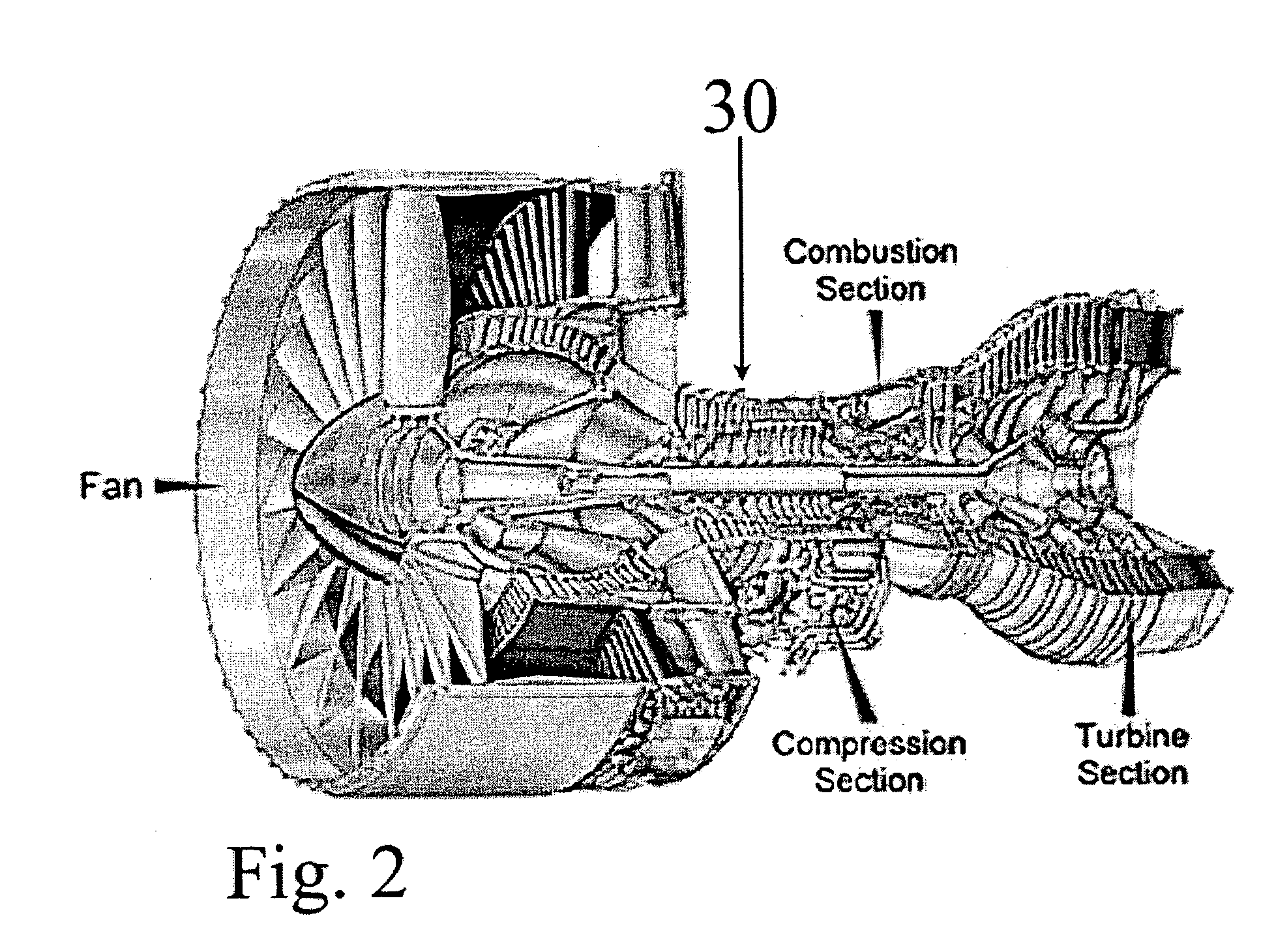Centrifugal casting of titanium alloys with improved surface quality, structural integrity and mechanical properties in isotropic graphite molds under vacuum
a technology of isotropic graphite and titanium alloy, which is applied in the direction of manufacturing tools, foundry molds, foundry patterns, etc., can solve the problems of dense structure across the wall and sound, and achieve the effects of improving quality, superior mechanical properties, and enhancing the durability of high density high strength isotropic graphite molds
- Summary
- Abstract
- Description
- Claims
- Application Information
AI Technical Summary
Benefits of technology
Problems solved by technology
Method used
Image
Examples
example 1
[0155] Tables 3 and 4 list several titanium and titanium aluminide alloys processed into of high quality by centrifugal casting in isotropic graphite molds in accordance with the invention.
3TABLE 3 (Titanium alloys) Alloy Composition (wt %) No. Ti Al V Sn Fe Cu C Zr Mo Other 1 Bal 6.0 5.05 2.15 0.60 0.55 0.03 2 Bal 3.0 10.3 2.1 0.05 3 Bal 5.5 2.13.7 0.3 4 Bal 6.2 2.04.0 6.0 5 Bal 6.2 2.02.0 2.0 2.0 Cr 0.25 Si 6 Bal 5.0 2.25 7 Bal 2.5 13 7.02.0 8 Bal 3.0 10 2 9 Bal 3 15 3 3.0 Cr 10 Bal 4.56 11.5
[0156]
4TABLE 4 (Titanium aluminum alloys) Alloy Composition (wt %) No. Ti Al Nb V Other 1 Bal 14 21 2 Bal 18 3 2.7 3 Bal 31 7 1.8 2.0 Mo 4 Bal 24 15 5 Bal 26 12 6 Bal 25 10 3.0 1.5 Mo
[0157] Typical shapes of titanium castings that can be fabricated by the method of centrifugal casting in isotropic graphite molds rotated around its own axis described in the present invention are as follows:
[0158] Rings and hollow tubes and the like with typical dimensions as follows: 4 to 80 inch diameter.times...
example 2
[0161] Using the centrifuge casting method in accordance with the scope of the present invention, titanium alloys listed in Tables 3 and 4 are fabricated as castings of intricate shapes and thin walls. This technique is capable of producing castings with thin walls ranging between 0.05 to 0.1 inch in thickness. The modular molds with machined cavity assembled with stationary and removable cores as per FIG. 11 are positioned along the perimeter of a turn table and are rotated at speeds between 100-1000 RPM. The molten metal of a titanium alloy is introduced into the downsprue and is forced towards the mold cavities via the runners under the action of the centrifugal force mold cavities through the runners. The castings are produced with high surface quality free from alpha casing and casting defects.
example 3
[0162] Using the centrifuge casting method in accordance with the scope of the present invention, titanium alloys listed in Tables 3 and 4 are fabricated as castings of intricate shapes and thin walls. The modular molds with machined cavity assembled with stationary and removable cores as per FIG. 15 are positioned along the perimeter of a turn table and are rotated at speeds between 100-1000 RPM. The molten metal of a titanium alloy is introduced into the downsprue and is forced towards the mold cavities via the runners under the action of the centrifugal force mold cavities through the runners.
[0163] Using a mechanism provided into the apparatus, the split halves of the modular mold assembly are made to open along the parting line while still under vacuum within a very short time after the completion of pouring of the melt and when the melt has completely solidified to 100-200C below the solidus temperatures of the alloys and when the casting has not yet underwent any measurable s...
PUM
| Property | Measurement | Unit |
|---|---|---|
| porosity | aaaaa | aaaaa |
| compressive strength | aaaaa | aaaaa |
| compressive strength | aaaaa | aaaaa |
Abstract
Description
Claims
Application Information
 Login to View More
Login to View More - R&D
- Intellectual Property
- Life Sciences
- Materials
- Tech Scout
- Unparalleled Data Quality
- Higher Quality Content
- 60% Fewer Hallucinations
Browse by: Latest US Patents, China's latest patents, Technical Efficacy Thesaurus, Application Domain, Technology Topic, Popular Technical Reports.
© 2025 PatSnap. All rights reserved.Legal|Privacy policy|Modern Slavery Act Transparency Statement|Sitemap|About US| Contact US: help@patsnap.com



